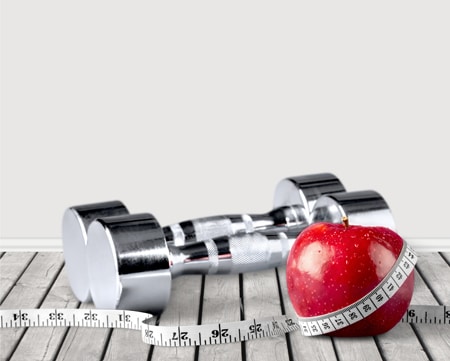
It’s a common question from dieters: Is it possible to boost metabolism to help with weight-loss goals? While there are many theories on the topic, the solution may not be as easy as just making one simple change. In fact, metabolism, for most of us, changes based on diet, exercise, and hormones.
What Is Metabolism, Anyway?
Technically, metabolism is defined as the chemical processes that occur within a living organism in order to maintain life. In more direct terms, metabolism is the process through which the body converts fuel (what you eat and drink) into energy.
There are plenty of misnomers about the term, and most people think that thin people must have a higher metabolism. That isn’t true, though; in fact, thin people have a lower metabolism than heavier people. That’s because it takes more energy to run a larger body, and fuel is always being burned by the body, even when we’re sleeping.
While a slower metabolism isn’t usually related to weight gain, the Mayo Clinic is quick to point out that metabolism is linked to weight overall, which makes sense given that it’s all about converting food to energy.
How Diet Affects Metabolism
Pretty much everything that has to do with health and weight goes back to food. While your natural inclination might be to cut back drastically on calories in an effort to lose weight, your approach could be having the opposite effect on your metabolism.
When you deprive your body of the fuel it needs to perform, it will go into reserve mode. Remember that we are all cavemen at our core, and our bodies were built to take care of themselves. If you’re not eating enough calories, your body will use what it has sparingly, thus dropping its burn rate.
You should never go below 1,000 calories in a day, and most women need 1,500–2,000, whereas men need 2,000–2,500, according to Authority Nutrition. Your specific dietary needs will depend on your frame and how much weight you want to lose, so talk to your doctor or a nutritionist and keep an eye on your progress.
The quality of food you eat makes a difference as well. Protein is one of the best ways to boost metabolism as a pure fuel for your body, but fat and carbohydrates are other important fuel sources for the efficient running of your body’s daily tasks.
It’s important to remember that, while you’re watching what you eat, you should refrain from skipping meals. Breakfast starts your metabolism on the right level, for instance. There’s no need to stuff yourself, but you shouldn’t starve either.
Does Weightlifting Increase Metabolism?
When you lift weights, you create more muscle in your body. And while aerobic exercise is excellent for the heart and certainly burns calories, weightlifting is a core requirement for increasing metabolism. That’s because muscle burns more calories than fat does.
Also, as we age, we naturally lose muscle mass. By lifting weights, you counteract that loss and keep your muscles strong and engaged. The higher muscle-to-fat ratio you have, the better you’ll be at burning calories long after you’ve completed your cardio workout.
Here’s a fun fact about weightlifting: Experts suggest that your metabolism is increased up to 39 hours following your workout. That’s huge! And a great reason to add weightlifting to your normal cardio workout routine.
Hormones’ Part in Metabolism
Did you know that the thyroid regulates metabolism? It’s also the regulator of hormones, so it’s no surprise that hormones and metabolism are interrelated. A thyroid that is out of whack can produce too many or too few hormones, thus messing up your overall system. Every cell in the body relies on the hormones the thyroid produces for regulation of metabolism. Therefore, if you’re having thyroid issues, you’re likely having weight and metabolism issues.
A New Option: CoolSculpting
If you have been struggling with your weight, the best first step is to speak to your doctor. He or she can provide you with a diet and exercise plan based on your body’s needs and goals, as well as check your thyroid to ensure it’s working as it should be.
Once you have obtained a clean bill of health, give it a little time. But if your approaches still aren’t working, it may be time to look at CoolSculpting. This non-invasive, FDA-cleared procedure freezes fat, which is then naturally flushed from your body. It works with the things you’re already doing, not against them, so it’s the perfect solution for the person who’s watching his diet and working out regularly—but still isn’t meeting goals.
Take a look at our before-and-after photos to see some true results. Then contact us. You’re that much closer to your goal!







